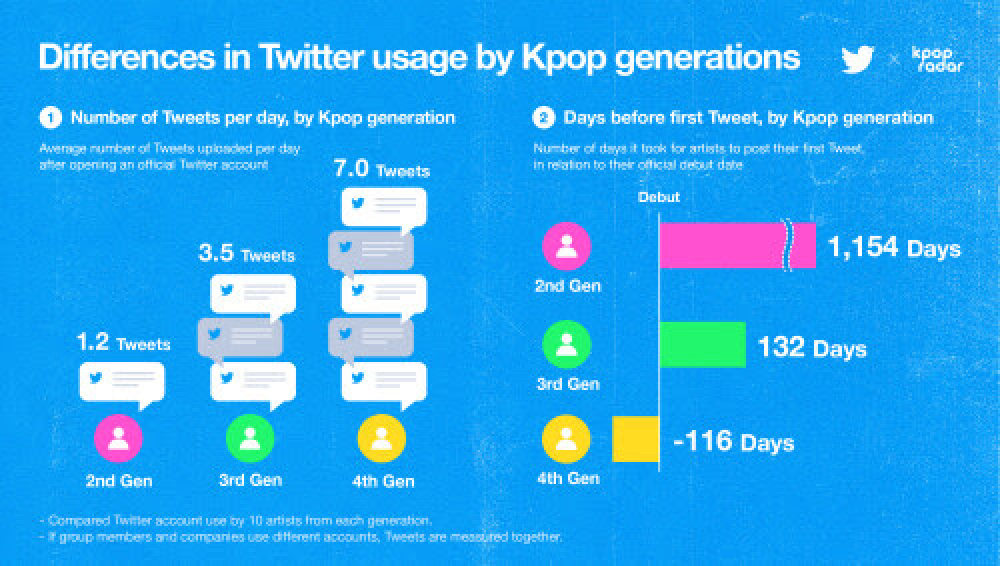
From Itzy to Stray Kids, younger K-pop groups use Twitter the most to engage with fans, social media platform says
- K-pop groups created from 2017 onwards, known as the fourth generation, use Twitter more often to engage their fans
- These groups, including Aespa, Ateez and The Boyz, post twice as many times as third-generation groups
The latest generation of K-pop acts are using Twitter as an important tool, the social media platform reports.
An analysis from Twitter, powered by fandom data observatory K-pop Radar, published on Monday, reveals that the burgeoning fourth generation of K-pop acts are using the platform to engage with fans where previous generations of K-pop acts have not.
Historically, K-pop acts have been divided across different generations based on artistry and cultural impact, and the fourth generation is considered to be in its early days; for the sake of their research, Twitter determined that the fourth generation of K-pop began in 2017.
Twitter and K-pop Radar analysed 69 rising K-pop acts with more than 300,000 Twitter followers as of May 1, and discovered that the newer groups were engaging with fans on Twitter.

Earlier generations of K-pop stars favoured more direct fan-artist communities, such as South Korea’s microblogging fan cafes, while the third generation began to utilise global social media platforms. Currently, a series of fan-to-artist apps such as Weverse, Bubble, and Universe have replaced fan cafes to facilitate direct conversations between artists and fans, while social media helps them continue to grow their audiences.
The third generation of K-pop acts, which Twitter perceives as having begun in 2012, were the first the platform reveals actively engaged with global fan bases over social media. Nowadays, the third generation artists typically post between three and four tweets a day, while 4th generation K-pop groups typically tweet about seven times a day on average. Artists from the second generation of K-pop, which Twitter says began in 2003, tweet on average 1.2 times a day.
Exo release new album ‘Don’t Fight The Feeling’ as Lay returns
Fourth gen acts, such as Itzy, Ateez, The Boyz, Aespa, Enhypen, (G)I-dle, Stray Kids, Tomorrow X Together (TXT), and Treasure, have notably been tweeting before releasing their first song or album, making their official debut, with an average of 323 pre-debut tweets from among the 69 acts. In comparison, second generation K-pop groups on average never tweeted until 1,154 days into their careers, and third generation groups on average tweeted 132 days into their career.
On average, fourth generation K-pop groups gained 562,377 followers before their official debut.
Twitter suggests that this hints to a focus on global audiences, as fourth generation K-pop groups typically release their first overseas-focused album nine months earlier than previous-generation acts, and on average had their first overseas concert on average 200 days into their career, while the third generation of K-pop groups had their first overseas concert about 582 days into their career.


